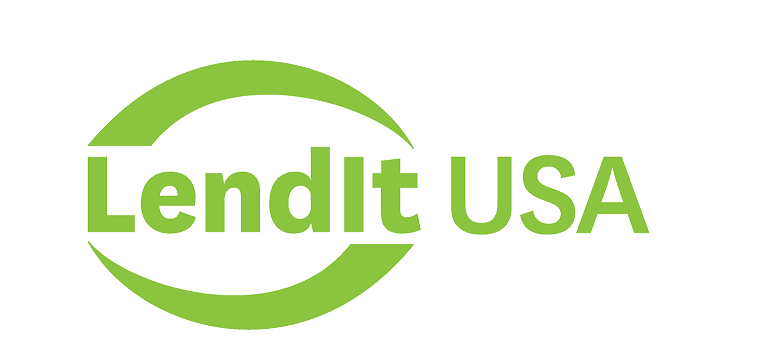INVENTORY
FINANCING
fOR STARTUPS
Do you sell a physical product with sales over $400,000?
Kickfurther funds up to 100% of your inventory costs at flexible payment terms so you don’t pay until you sell. Fund your entire order(s) on Kickfurther each time you need more inventory so you can put your existing capital to work growing your startup without adding debt or giving up equity.
- Often 30% lower cost than alternate lenders & factors
- Quickly fund $5,000,000+ in inventory
- Create a custom payment schedule (1-10 months)
- Fund inventory with no payments until revenue lands
What Is Startup Inventory Financing?
Scaling a new business is exciting but undeniably challenging, especially when it comes to securing the funds necessary for growth. Without adequate capital, startups often struggle to invest in key areas like expanding product lines, ramping up marketing efforts, or hiring skilled team members. Yet, raising funds can feel like an uphill battle—most lenders require a proven credit history or profitability, leaving many startups stuck in a catch-22.
The Limits of Bootstrapping in Startup Growth
Bootstrapping is a common first step. By pooling personal savings, leveraging credit, and reaching out to friends and family, founders often scrape together enough to fund initial orders. While bootstrapping allows entrepreneurs to maintain full ownership and control, it’s not always sufficient. Startup costs often outpace the resources available from personal networks, and relying on this method alone can strain relationships or leave the business vulnerable.
This is where inventory financing for startups comes in as a practical and accessible solution. Inventory financing provides startups with the capital they need to purchase or produce inventory without requiring extensive credit history or other traditional lending prerequisites. Typically structured as a short-term loan or line of credit, inventory financing allows you to use the inventory itself as collateral. In the rare event you can’t repay, the lender can seize and sell the inventory to recover their funds—eliminating the need for personal guarantees or other high-risk commitments.
Inventory financing for startups is especially advantageous because it aligns funding with growth. Instead of tying up precious cash reserves in inventory, you can allocate your capital to scaling other parts of your business—whether that means enhancing marketing efforts, refining operations, or launching new products.
How Startup Inventory Financing Works
Startup inventory financing helps businesses stock up on the goods they need to sell, but it rarely covers the full cost. Why not? Because lenders take on risk when they base loans on inventory value. If you default, the lender has to repossess and sell off that inventory—usually at a discount. Because of this, lenders typically fund only 50-80% of the inventory cost, depending on how valuable they think the goods are.
Why Traditional Financing Can Be Challenging for Startups
For startups, landing this kind of financing can be especially tricky. Traditional lenders often want to see a strong credit history and proven financial performance—two things most startups don’t have yet. That makes standard options a tough fit for young businesses still finding their footing.
Are There Alternatives for Startups?
Yes, and some options are tailor-made for businesses just starting out. Peer-to-peer lending platforms, for instance, often welcome startups with compelling business plans. Angel investors, on the other hand, look for innovative ideas they believe in, making them another avenue worth considering.
But what if you need something more structured? Platforms like Kickfurther step in to offer a flexible solution for startups. If your business generates $150,000 or more in annual sales, Kickfurther can help fund your inventory without requiring extensive credit history or collateral. Their repayment terms sync with your sales, giving you room to grow without straining your cash flow.
Why You Need Startup Inventory Financing
Growing a startup without solid inventory financing for business makes the journey unnecessarily difficult and slows your progress. Securing the right inventory financing can significantly ease the process and set you up for success.
Here's Why Startup Inventory Funding Matters:
Avoid Costly Stockouts
Running out of inventory risks losing customers and harming your brand’s reputation. Inventory financing helps you keep shelves stocked, meet demand, and prove your reliability to customers.
Protect Your Cash Flow
With inventory financing, you don’t have to tie up all your capital in stock. This frees up funds for other priorities like marketing, hiring, or improving operations. It’s a practical way to make the most of your resources.
Low-Risk Collateral
Unlike traditional loans requiring personal guarantees or major assets, inventory financing uses your inventory as collateral. This protects your personal and business assets while still giving you the funds you need.
Easier to Secure Than Traditional Loans
Using inventory as collateral often makes these loans easier to secure, even for startups with limited credit history. It’s a straightforward option for accessing funding without jumping through unnecessary hoops.
Scale Faster and Smarter
Inventory financing lets you meet growing demand, expand your product line, and act on opportunities without waiting for more cash flow. It removes barriers, allowing you to scale efficiently and confidently.
Launch Your Startup Dreams with Kickfurther
Starting and scaling a business can be tough, especially when inventory costs start piling up. That’s where Kickfurther steps in—a platform designed to make inventory financing for startups simple, accessible, and founder-friendly. It’s a smart way for startups to grow without drowning in debt or giving up equity.
Here’s Why Kickfurther is the Go-to Choice for Startups:
Repay Only When You Sell
With Kickfurther, you don’t need to stress about upfront repayments. Instead, you pay back as your inventory sells, freeing up cash for marketing, operations, and other critical areas of your business.
Keep Full Control of Your Business
Unlike some funding options, Kickfurther doesn’t require you to give up equity. That means you retain 100% ownership and can grow your business on your terms.
No Traditional Debt on the Books
Kickfurther’s unique model avoids the pitfalls of traditional debt. It’s designed to fund your growth while keeping your financials in good shape.
Cover Up to 100% of Inventory Costs
Whether you’re gearing up for a product launch or trying to meet rising demand, Kickfurther can fund your inventory needs entirely—without draining your working capital.
Customizable Payment Plans
Every business is different, so Kickfurther lets you choose repayment terms that align with your sales cycle. With options ranging from 1 to 10 months, you’re in control.
Proven Success Stories
Startups across industries have turned to Kickfurther for inventory financing for companies, and it’s paid off. Companies like SunJack, Ellison Eyewear, Inc., and iFetch have used the platform to secure funding and scale their businesses.
Kickfurther is a growth partner. With fast access to capital, flexible terms, and a founder-first approach, it’s here to help you succeed without sacrificing ownership or financial stability.
Where you've seen us


- Create Your Account Start by creating a business account with Kickfurther. Upload your company details, sales data, and inventory requirements. Once your account is set up, you can launch your deal.
- Get Funded Fast After approval, Kickfurther’s community of backers can fund your deal within minutes to hours. You’ll never miss another opportunity to meet demand or secure volume discounts from your supplier.
- Customize Your Payment Schedule Kickfurther handles the payments to your supplier directly, ensuring your inventory is produced on time. You outline your expected sales periods and customize payment terms that align with your revenue cycle. At the end of each sales period, you’ll submit sales reports and pay backers their consignment profit based on the items sold.
- Complete and repeate Once you’ve completed your payment schedule, you’re ready for the next step. Businesses that perform well on the platform often secure lower rates for future funding rounds.
See Who Else We’ve Helped
Frequently asked questions
Not seeing your questions here? Please feel free to reach out!
What are startups in business?
Startups are young companies in the very infant stages. Startups can be of all sizes but are usually fairly small. As entrepreneurs ponder on their best ideas and daydream about the future, they may find one that they must live out. Startups are usually a unique product or service that founders want to bring to market. It’s perfectly normal for a startup to lack a fully developed business model or plan and adequate funding too, but if things take off, this should quickly change. Startups are often funded by founders until they are established enough to receive outside funding. Some well-known companies that have changed the way we do things once started as a startup. For example, Airbnb, Uber, Square, and Instagram were all once a struggling startup thriving on a valuable idea. In most cases, startups begin as a sole proprietorship, but can easily grow from there.
What are the 4 types of startups?
While there are other types of startups aside from the following, the four main types of startups are as follows.
#1. Small Business Startups
Small business owners are an elite group of entrepreneurs truly willing to risk it all. Driven by a belief in their product or service they devote their lives to helping others with their product or service while trying to make a living. Startups can start as a small business. If they do, they’ll likely have a team of employees and some money behind them. Tech startups often fall under this category. While it can be difficult to raise funding, small business startups have the opportunity to pivot faster to meet market demand since they’re already established. Small business startups may not ever become profitable. It’s normal for small business startups to be created with the sole intention of being sold.
#2. Lifestyle Business Startups
Lifestyle brands are on the rise. Entrepreneurs that create products or services as a direct result of their own lifestyle can start a lifestyle business startup. Lifestyle startups usually don’t require as much capital and are designed to be smaller. While they may be easier to start and operate, they may not be as profitable. These startups are usually driven by the goal of turning a profit that will sustain the founder rather than growing as fast as possible to be sold or reap major profits.
#3. Freelance Startups
Freelancers are certainly entrepreneurs. Their fearless spirit enjoys freedoms and being their own boss. Most freelancers stumble upon a niche and keep chasing it. Freelancers can contract out services or work on a per-project schedule and can cover just about any field from engineering to project management. Freelancing is most definitely a type of startup and you never know where it’ll take you.
#4. Solopreneur
Solopreneurs and freelancers are similar, but there’s one main difference. Solopreneurs run their own business while freelancers typically work for or have relationships with other businesses whom they perform services for. Solopreneurs are an employee and a founder bundled into one. While the stress may be high, solopreneurs are an elite breed that can achieve great success. Some even thrive on the stress and anxiety of needing to rely on themselves.
How do I start my own startup?
While we can break down the steps to start a startup, it’s not always clean and easy. Furthermore, it’s not always planned. Who knows when you will have that one idea that ignites an entire business journey. For inspiration, here are 6 steps involved with starting your own startup.
#1. The million dollar idea
The foundation of a startup is the idea. With so many successful products and services already on the market, you’ll need to bring fierce competition to earn a share of the market. Startups can improve existing products and services or create new ones, whatever you see fit. Keep in mind that consumers will also need to understand why your product or service is better so you’ll need to invest in marketing efforts.
#2. Plan your path to success
Startups often just start, and then realize their idea is growing but their foundation is not set. Should you choose to seriously pursue a startup, create a business plan and organize the steps you’ll need to take. Furthermore, when you’re ready to receive funding you can use the business plan to close investors.
#3. Raise capital
Startups will need access to funding to grow. Whether the funds come from personal accounts, friends or family, angel investors, bank loans, or some mix of the following, you’ll need healthy cash flow. In the beginning it may be hard to qualify for traditional financing so you may need to get creative. Once you have at least $150,000 or more in trailing 12 months revenue, you can apply for inventory funding at Kickfurther.
#4. Enlist the right people and get legal protection
You may plan to run your startup alone but more times than not others will be involved. As you build out your team, put in the work to attract the right people. One wrong fit could diminish your success. Furthermore as you involve others and prepare to begin serving customers, make sure there are no legal issues.
#5. Setup retail channels (online and/or storefront)
Securing the necessary real estate will be important in most cases. If a third party is producing products, you may be able to run the startup out of your home. But, at some point you’ll likely need more room. Determine if leasing or buying property makes more sense and consider tax deductions for commercial space. Selling online can create tremendous opportunity too, in fact some startups only sell online.
#6. Connect with a customer base
As a startup you may not entirely know who your target market is, but you should have a good idea. Be sure to invest in a thorough and effective marketing plan that targets your customer base. As you grow, constantly make changes to better define who your customer base is.
Do banks give loans to startups?
Some banks will loan money to startups, but usually with a hefty interest rate or serious collateral. In most cases, the bank will expect the business owners to borrow against their home or another significant asset to secure the loan. Startups are usually better off pursuing financing from alternative sources.
How much can you get for a startup business loan?
Most startup loans range from $9,000 to $20,000, but there’s really no rule for what’s possible. Some startups are able to secure hundreds of thousands of dollars. It will really come down to your ability to repay, your idea, and how much of a risk investors or backers are willing to take.
How do I qualify for business startup financing?
Qualifying for a startup business loan is no easy task. First, you’ll need to determine what kind of loan you need. Next, you’ll need to research what requirements are specific to the particular loan you need. Most lenders and investors will look at personal and or business credit scores and require documentation. Before applying for a loan make sure your credit score and financials are healthy as you’ll probably need good credit to qualify. Startups pursuing funds for inventory are highly encouraged to apply at Kickfurther for affordable inventory funding.
Is it hard to get startup business financing?
More times than not, startups fail. According to Investopedia, 90% of startups ultimately dissolve. Getting startup financing can be challenging and expensive. However, funding may be the difference between success and failure. If you’re confident in your mission, put in the work and get the financing you need, but always be aware of the cost. Kicfurther is the world’s first online inventory funding platform that enables small businesses to access funds that they are unable to acquire through traditional sources. At Kickfurther startups can access inventory funding up to 30% cheaper than traditional sources.


